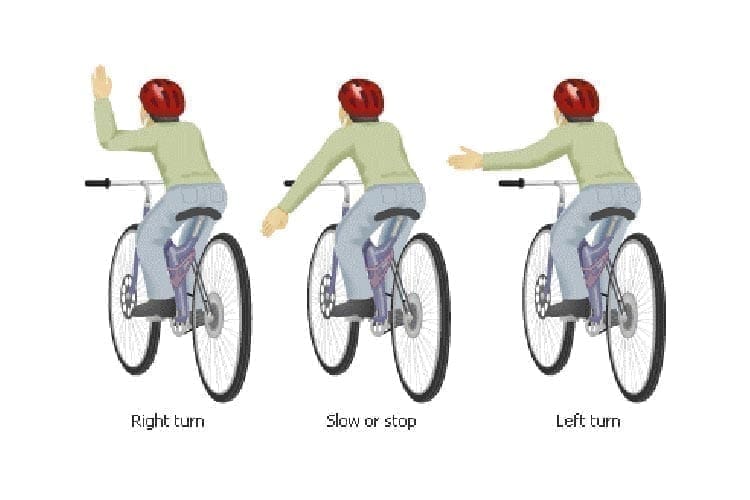By Richard Duquette, Esq, Law Firm of Richard Duquette
Listen to the Podcast
Turning movements not only include the typical 90º turning movement, but also lane changes. California Vehicle Code §22107 states:
“No person shall turn a vehicle from a direct course or move right or left upon a roadway until such movement can be made with reasonable safety and then only after the giving of an appropriate signal in the manner provided in this chapter in the event any other vehicle may be affected by the movement.”
Thus, any turning movement or lane change that causes an accident may be considered illegal because it was not made “with reasonable safety.” Since this code section does not state “motor vehicle,” the term “vehicle” as used in this section includes a bicycle.
The code also requires the use of turn signals if any other vehicle (including a bicycle) may be affected by the turning movement. It is good to get into the habit of signaling all of the time, not just when alerting others of your turning movement. One could argue that if there are no other cars on the road, you can turn without using any signals. But how many times have you heard someone say, “I didn’t see the other car,” just after an accident occurred? The California Driver Handbook concurs: "Signal even when you don't see any vehicles around you. The vehicle you don't see might hit you." Further, with more and more hybrid vehicles on the road, a bicyclist may not hear these often quiet vehicles approaching from behind, so habitual signaling may alert a vehicle you are unaware of. Signal as a matter of law, of courtesy, and of self-protection.
For bicyclists, there are two ways to make a left turn:
- The same as a motor vehicle: signal, move into the left lane when safe to do so, and turn left after yielding to any oncoming traffic.
- As a pedestrian: Dismount and walk your bike across when safe to cross.
Any signal of intention to turn right or left shall be given continuously during the last 100 feet traveled by the vehicle before turning (Vehicle Code §22108). After you signal your intention, you are not automatically entitled to make the maneuver. It’s necessary to be sure that the place you intend to go is not already occupied. Make sure it’s clear before you move. Look back before you pass or merge. A rear-view mirror is a good idea, but don’t rely on it alone.
Enjoy More Articles and Podcasts By Richard Duquette, Esq, Law Firm of Richard Duquette
About the Law Firm of Richard L. Duquette
The Law Firm of Richard Duquette has recovered millions in damages for injured bicyclists since 1983. Attorney Duquette is an experienced bicyclist himself and has dedicated his practice to helping this community. He is experienced in all types of cases involving bicycle crashes, injuries, and other legal troubles.
Mr. Duquette serves a wide variety of bicyclists. Whether you prefer road cycling, mountain biking, track riding, Randonneuring, E-Bicycles, Handcycles, Century Rides, Triathlons, Duathlons, or Criterium, Mr. Duquette knows how to best serve your legal needs regardless of the type of bicyclist you are.
Mr. Duquette is an expert at maximizing, proving, and recovering damages.
For more information please visit the Law Firm of Richard Duquette.
The information in this article is for general information purposes only. The focus of this article is on California Law. You should contact an attorney in your state for case-specific advice, as details of the law and procedural requirements vary from state to state. Nothing in this article should be taken as legal advice for any individual case or situation. This information is not intended to create an attorney-client relationship; and the receipt, reading, listening, or viewing of this content shall not constitute an attorney-client relationship. Nothing in this article shall be construed as a warrant, promise, or guarantee about the outcome of your case or any other matter. This information may contain personal impressions or statements of opinion on a subject that do not apply in your case. Further, statements of law reflect the current state of the law at the time of writing and/or recording, and may not reflect subsequent changes in the law.
No products found.

















